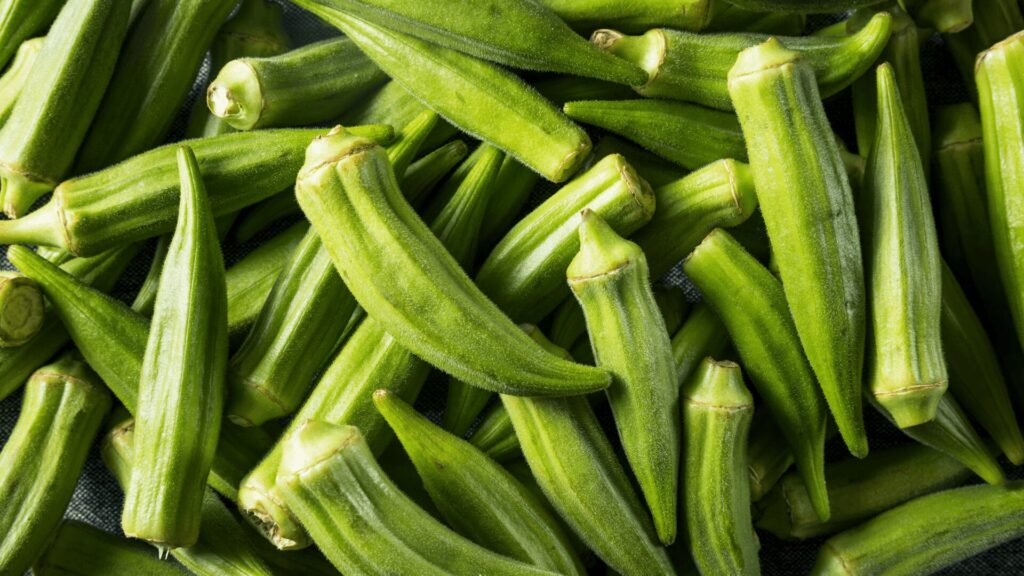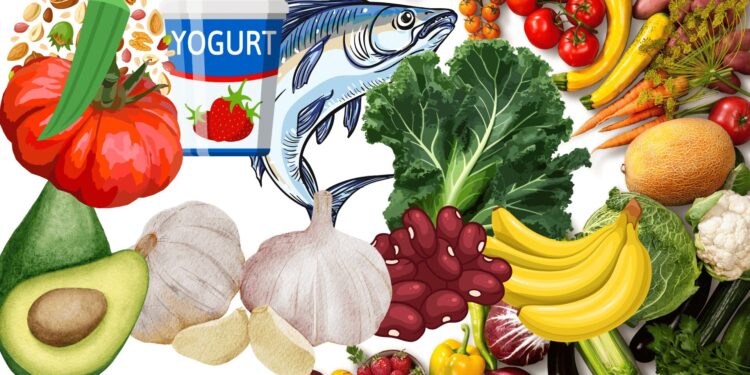Hypertension, or high blood pressure, is a common health issue that can lead to serious complications if not managed properly. A healthy diet plays a crucial role in controlling hypertension. Here are ten Nigerian foods that can help manage and reduce high blood pressure, along with detailed usage guidelines.
1. Leafy Green Vegetables
Examples: Ugu (fluted pumpkin leaves), spinach, and bitter leaf.

Benefits: These vegetables are high in potassium, which helps balance sodium levels in the body and reduce blood pressure. They also contain magnesium and fiber, which are beneficial for heart health.
Usage:
- How to Use: Incorporate leafy greens into soups, stews, and salads. Ugu can be added to egusi soup, spinach can be used in efo riro, and bitter leaf can be added to onugbu soup.
- When to Use: Consume at least once daily as part of your main meals.
- How Much to Consume: Aim for at least 1-2 cups of cooked leafy greens per day.
2. Garlic
Usage: Can be added to soups, stews, sauces, and marinades.

Benefits: Garlic contains allicin, which has been shown to reduce blood pressure. It also helps in improving cholesterol levels and overall heart health.
Usage:
- How to Use: Mince or crush garlic and add it to your dishes. It can be used in preparing jollof rice, stews, and marinades for grilled meat or fish.
- When to Use: Use garlic daily in your cooking.
- How Much to Consume: Aim for 1-2 cloves of garlic per day.
3. Bananas
Usage: Eaten as a snack or added to smoothies.

Benefits: Bananas are rich in potassium, which helps to regulate blood pressure by counteracting the effects of sodium.
Usage:
- How to Use: Eat bananas as a snack, add them to smoothies, or use them as a topping for oatmeal or yogurt.
- When to Use: Consume bananas daily, either as a part of breakfast or as a snack.
- How Much to Consume: Aim for 1-2 bananas per day.
4. Beans
Examples: Black-eyed peas, kidney beans, and brown beans.

Benefits: Beans are high in fiber and protein, which help maintain healthy blood pressure levels and improve overall heart health.
Usage:
- How to Use: Use beans in dishes like moi moi, akara, or add them to soups and stews.
- When to Use: Incorporate beans into your diet at least 3-4 times per week.
- How Much to Consume: Aim for 1 cup of cooked beans per serving.
5. Fish
Examples: Mackerel, sardines, and tilapia.

Benefits: Fish is rich in omega-3 fatty acids, which help lower blood pressure, reduce inflammation, and improve heart health.
Usage:
- How to Use: Grill, bake, or stew fish. Mackerel can be used in pepper soup, sardines can be added to salads, and tilapia can be grilled with spices.
- When to Use: Consume fish at least 2-3 times per week.
- How Much to Consume: Aim for 3-4 ounces (about 85-113 grams) per serving.
6. Yogurt
Usage: Can be eaten plain or used in smoothies and desserts.

Benefits: Yogurt contains calcium and probiotics, which can help reduce blood pressure and improve gut health.
Usage:
- How to Use: Eat yogurt as a snack, add it to smoothies, or use it as a base for salad dressings.
- When to Use: Include yogurt in your diet daily.
- How Much to Consume: Aim for 1 cup of yogurt per day.
7. Avocado
Usage: Added to salads, smoothies, or eaten as a spread.

Benefits: Avocado is high in potassium and healthy fats, which can help lower blood pressure and improve heart health.
Usage:
- How to Use: Add avocado slices to salads, blend it into smoothies, or mash it as a spread for bread or crackers.
- When to Use: Consume avocado a few times per week.
- How Much to Consume: Aim for 1/2 to 1 whole avocado per serving.
8. Nuts and Seeds
Examples: Almonds, cashews, and sesame seeds.

Benefits: Nuts and seeds contain magnesium, which helps to relax blood vessels and lower blood pressure. They also provide healthy fats and protein.
Usage:
- How to Use: Add nuts and seeds to salads, yogurt, or eat them as snacks. Sesame seeds can be sprinkled on dishes or used in making tahini.
- When to Use: Include nuts and seeds in your diet several times per week.
- How Much to Consume: Aim for a small handful (about 1 ounce or 28 grams) per serving.
9. Tomatoes
Usage: Used in stews, soups, and salads.

Benefits: Tomatoes are rich in potassium and antioxidants like lycopene, which can help reduce blood pressure and improve heart health.
Usage:
- How to Use: Use tomatoes in dishes like jollof rice, tomato stew, and salads.
- When to Use: Include tomatoes in your meals daily.
- How Much to Consume: Aim for at least 1 cup of tomatoes per day.
10. Okra
Usage: Commonly used in soups and stews like okra soup and ogbono soup.

Benefits: Okra is high in fiber and antioxidants, which help regulate blood pressure and improve overall heart health.
Usage:
- How to Use: Add okra to soups, stews, or grill it as a side dish.
- When to Use: Include okra in your diet several times per week.
- How Much to Consume: Aim for 1 cup of cooked okra per serving.
Incorporating these foods into your diet can help manage and reduce hypertension. It’s important to combine these dietary choices with other healthy lifestyle practices such as regular physical activity, reducing sodium intake, and avoiding excessive alcohol consumption. Always consult with a healthcare provider before making significant changes to your diet, especially if you have existing health conditions. By making informed food choices, you can take an active role in managing your blood pressure and improving your overall health.


















































